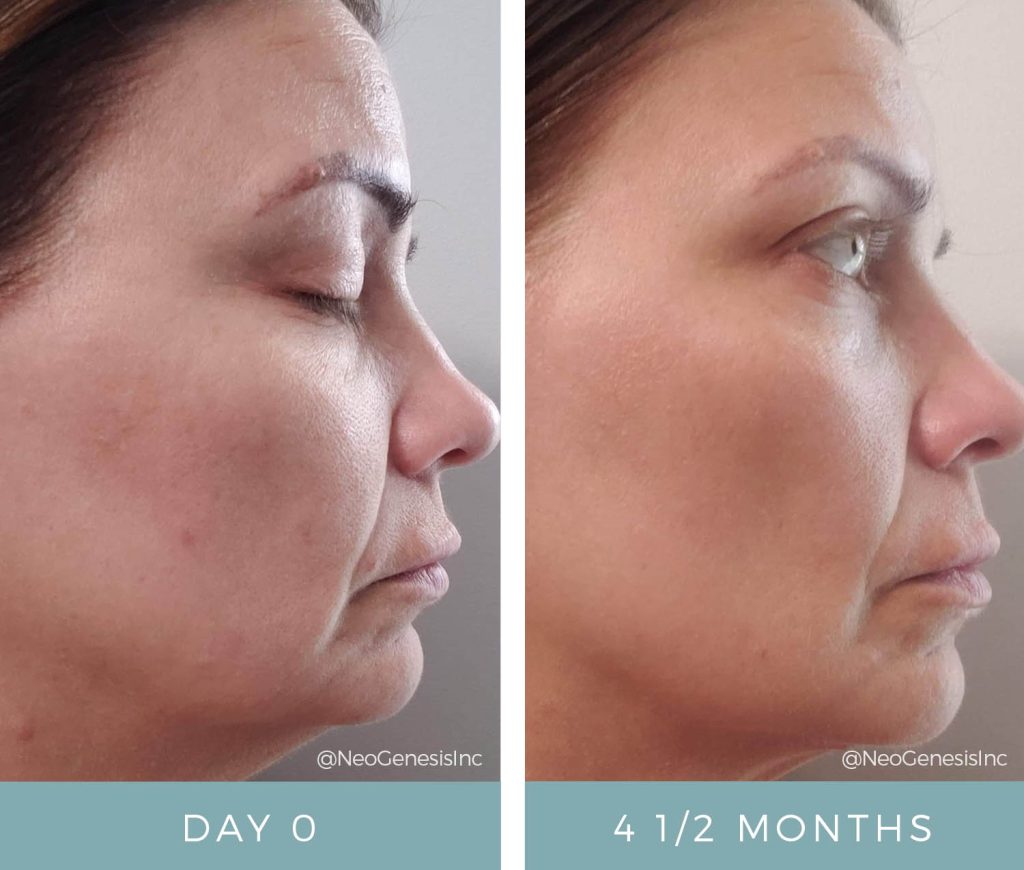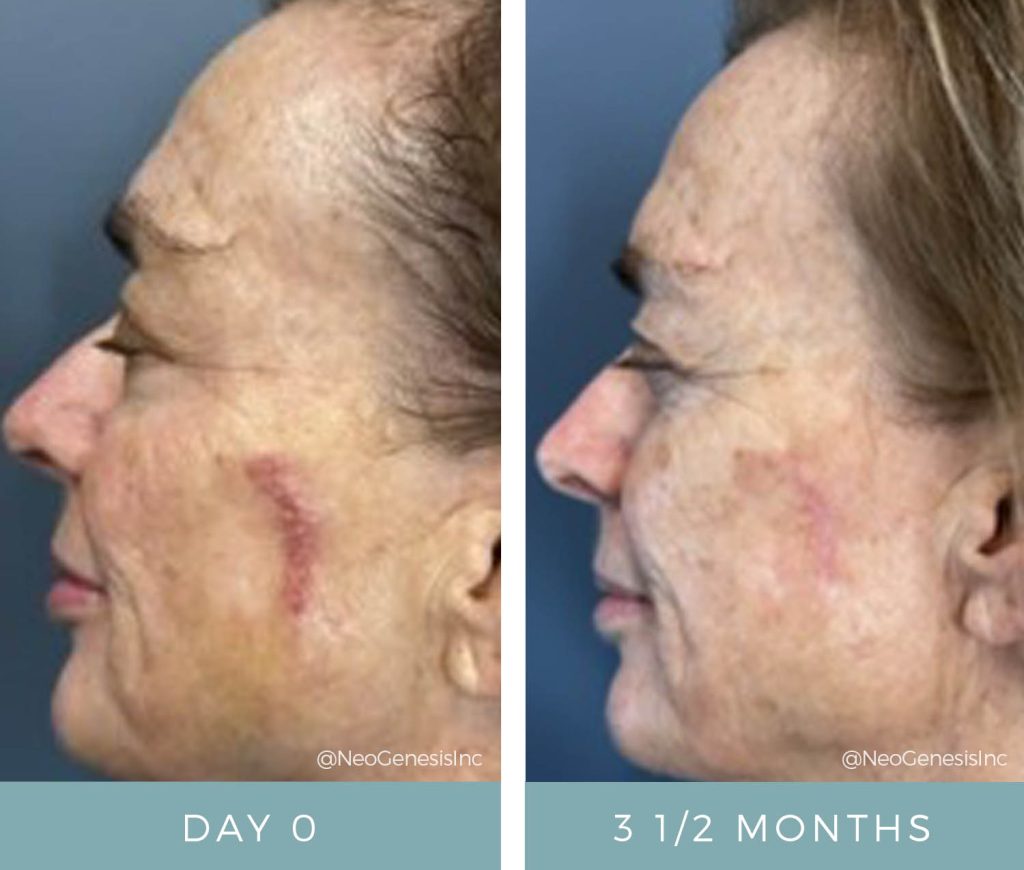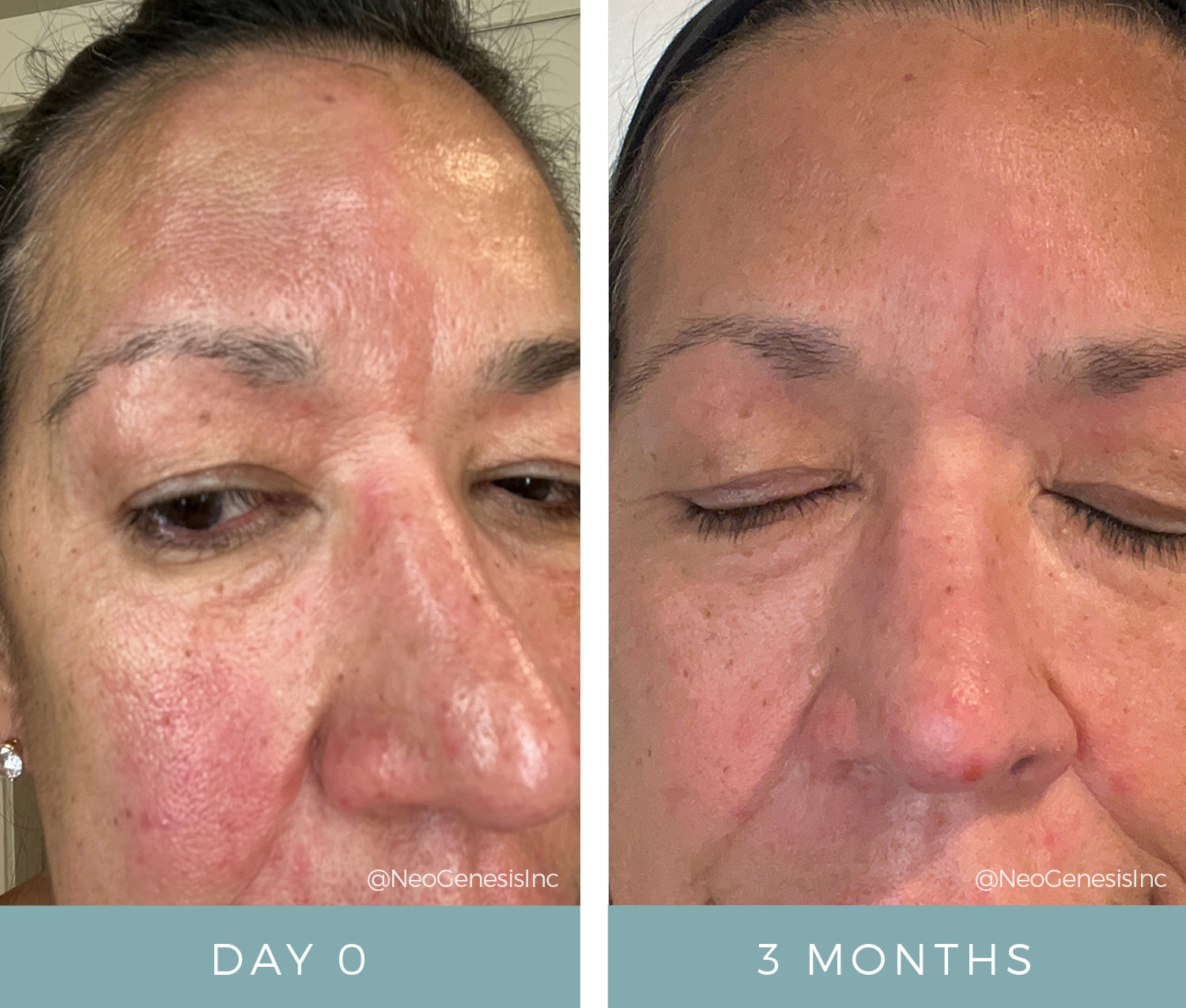Rosacea + Seborrheic Dermatitis

“Client has chronic issues with rosacea and seborrheic dermatitis. Her triggers include stress and certain types of food. Her skin develops pustules and areas of redness and becomes flaky and itchy.
She is now using the Recovery serum when the itch gets really bad and it relieves it. She loves the Barrier Renewal Cream, as it is soothing and really helps with the dry skin.” – Lisa K.
PRODUCTS USED:
Cleanser, Recovery, Skin Serum, Eye Serum, Intensive Moisturizer, Moisturizing Mist, Salicylic Acid Gel, Barrier Renewal Cream
PROTOCOL:
AM: Cleanser, Recovery, Skin Serum, Eye Serum, Intensive Moisturizer, Moisturizing Mist
PM: Cleanser, Recovery, Skin Serum, Eye Serum, Salicylic Acid Gel
As Needed: Barrier Renewal Cream, Moisturizing Mist
FEATURED VIDEOS
ROSACEA + SEBORRHEIC DERMATITIS
Seborrheic dermatitis is a chronic inflammatory skin disorder that primarily affects the scalp, face, and other areas rich in sebaceous glands. It is caused by an overgrowth of yeast on the skin, which leads to red, scaly, and itchy patches. These patches can also appear yellowish in color and may cause flaking or crusting. While the exact cause of seborrheic dermatitis is not fully understood, factors such as genetics, stress, and certain medical conditions can contribute to its development.
On the other hand, rosacea is a chronic skin condition that primarily affects the face, causing redness, flushing, and visible blood vessels. It can also cause small red bumps or pus-filled bumps on the skin. Unlike seborrheic dermatitis, rosacea is not caused by an overgrowth of yeast but instead by a combination of genetic, environmental, and lifestyle factors. Triggers such as sun exposure, heat, spicy foods, and alcohol can worsen the symptoms of rosacea.
It is always important to consult with a dermatologist for an accurate diagnosis and treatment plan for either seborrheic dermatitis or rosacea. While these skin conditions can be frustrating and uncomfortable, they can be effectively managed with proper care and treatment. By understanding the differences between seborrheic dermatitis and rosacea, individuals can take the necessary steps to improve their skin health and overall well-being.

“Client has chronic issues with rosacea and seborrheic dermatitis. Her triggers include stress and certain types of food. Her skin develops pustules and areas of redness and becomes flaky and itchy.
She is now using the Recovery serum when the itch gets really bad and it relieves it. She loves the Barrier Renewal Cream, as it is soothing and really helps with the dry skin.” – Lisa K.
PRODUCTS USED:
Cleanser, Recovery, Skin Serum, Eye Serum, Intensive Moisturizer, Moisturizing Mist, Salicylic Acid Gel, Barrier Renewal Cream
PROTOCOL:
AM: Cleanser, Recovery, Skin Serum, Eye Serum, Intensive Moisturizer, Moisturizing Mist
PM: Cleanser, Recovery, Skin Serum, Eye Serum, Salicylic Acid Gel
As Needed: Barrier Renewal Cream, Moisturizing Mist
FEATURED VIDEOS
ROSACEA + SEBORRHEIC DERMATITIS
Seborrheic dermatitis is a chronic inflammatory skin disorder that primarily affects the scalp, face, and other areas rich in sebaceous glands. It is caused by an overgrowth of yeast on the skin, which leads to red, scaly, and itchy patches. These patches can also appear yellowish in color and may cause flaking or crusting. While the exact cause of seborrheic dermatitis is not fully understood, factors such as genetics, stress, and certain medical conditions can contribute to its development.
On the other hand, rosacea is a chronic skin condition that primarily affects the face, causing redness, flushing, and visible blood vessels. It can also cause small red bumps or pus-filled bumps on the skin. Unlike seborrheic dermatitis, rosacea is not caused by an overgrowth of yeast but instead by a combination of genetic, environmental, and lifestyle factors. Triggers such as sun exposure, heat, spicy foods, and alcohol can worsen the symptoms of rosacea.
It is always important to consult with a dermatologist for an accurate diagnosis and treatment plan for either seborrheic dermatitis or rosacea. While these skin conditions can be frustrating and uncomfortable, they can be effectively managed with proper care and treatment. By understanding the differences between seborrheic dermatitis and rosacea, individuals can take the necessary steps to improve their skin health and overall well-being.







